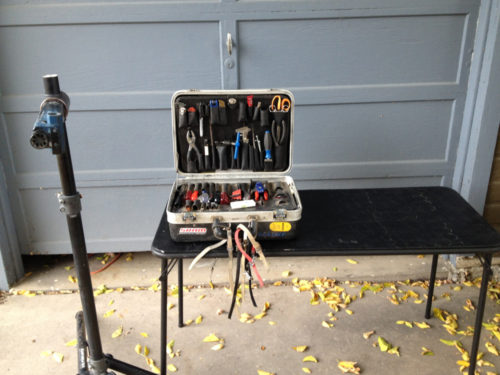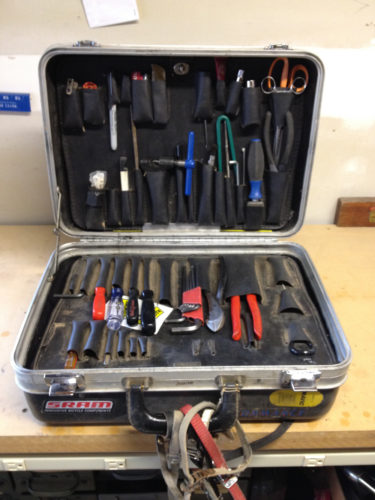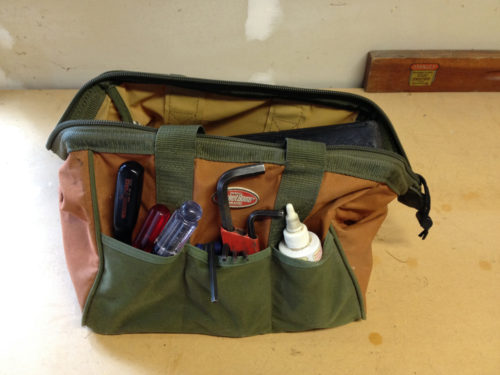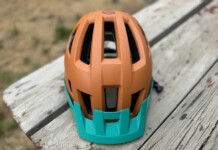By Tom Jow
Last month in the Mechanics Corner we got to take a peek at the workstation of one professional mechanic. Maybe that was interesting but, how many people have the space and committment to have a bench like that at home? So, if someone wanted a place to work on their bicycles, what would be a good way to do it? Let’s look at what is required for a workspace and how much it might cost.
The basic needs for performing bike repair are tools, a table or workbench, and workstand.
First, you’ll need some space and some light. A basic shop light can be had for about $30. The workbench however, will largely depend on how much space is available and what type of tool storage is required. A basic pre-fabricated 6 ft. wood workbench from HomeDepot is about $70. For those that would like to hang their tools on pegboard, a 4 x 8 sheet is $20 and pegboard accessory kits start at about $15. Another way to store the tools is in a toolbox. A metal 8 drawer toolbox costs about $60.

The tools that are required is a bit of a moving target, because different genres of bikes have different needs. For example, modern racing bikes require an Allen wrench set, a couple screwdrivers, and a tire pump. Working on older bikes or kids bikes also requires wrenches for hubs, headsets and wheel axles. In order to service hydraulic disc brakes, brand specific bleed kits and fluids are needed. To start from scratch, a pre-packaged tool kit from Park Tool or Pedro’s starts at around $100.

The last item every home shop needs is a workstand. Like the workbench, your choice of stands depends largely upon the space that is available. The gold standard is a professional shop stand such as the Park PRS-3 ($400). This stand is made of heavy duty steel, is adjustable for height and has a secure, rotating clamp mechanism. This stand must be bolted to the floor or mounted to a large, heavy steel plate. They are not easy to move around. A portable stand, at half the cost or less, is strong and stable enough for home repair tasks and also have the ability to be folded up for storage or travel.

My home shop is pretty basic and is based upon portability and having a small storage footprint. In the garage is an 8 ft. wood workbench that is usually covered with pieces and parts from home and yard projects. I also have a cheap rectangular card table that is used when I want to be outside or for trips. The workstand I use is an old Ultimate (now Feedback Sports) portable stand that is very stable on its three legs.






